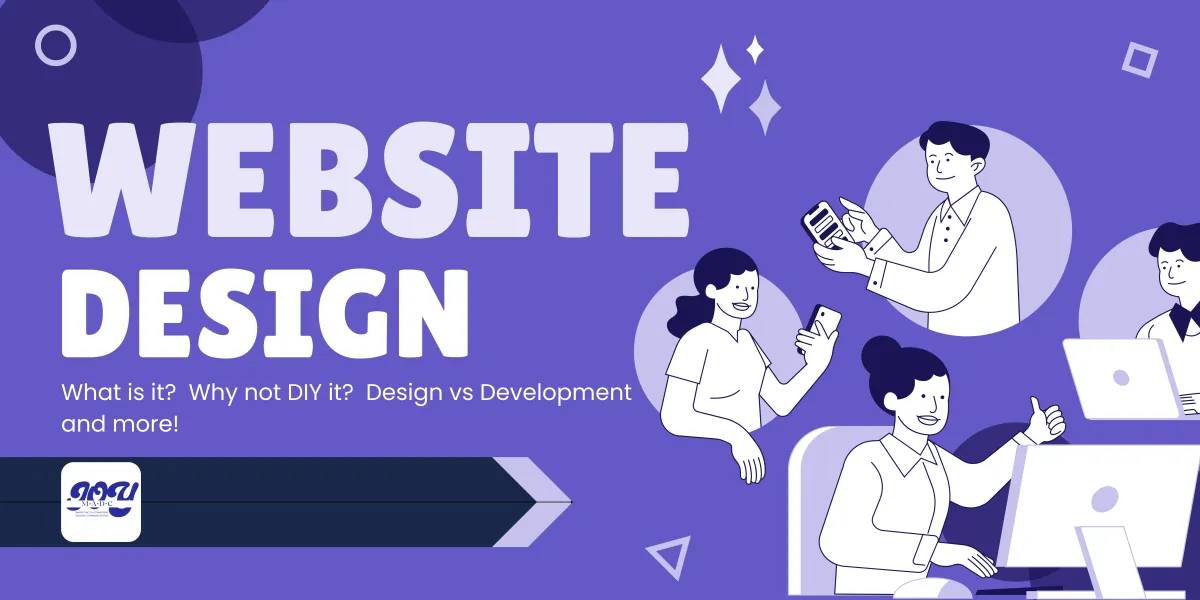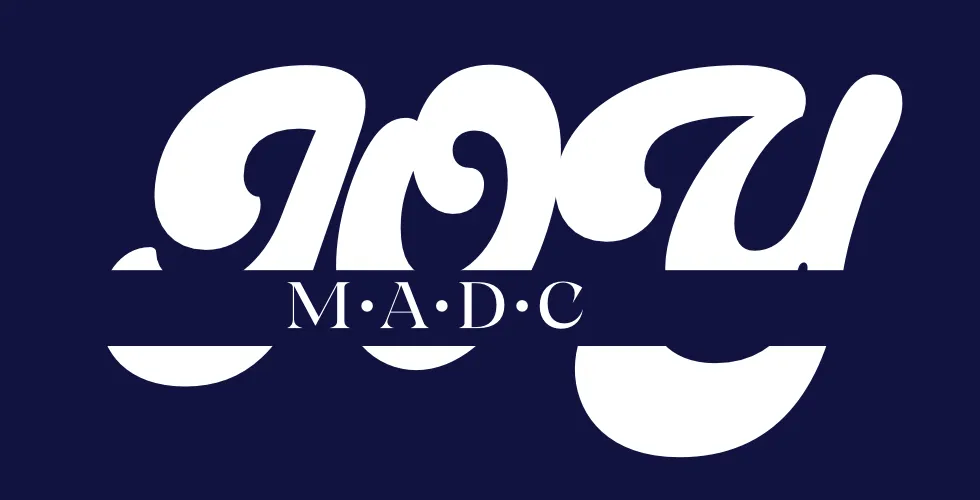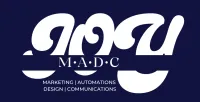Joy M.A.D.C's Blog
Joy M.A.D.C's Blog
Get ready for a new Blog every Tuesday!
Get ready for a new
Blog every Tuesday!

Why You Should Hire a Website Designer instead of DIYing a Builder
"Do what you do best and outsource the rest.”
- Peter Drucker: The father of Business Management.
What does this article get into?
This article helps Entrepreneur's who are starting a business, individuals new to the Website Design world, and aspiring Website Designers understand the basics of What a Website Design is, What a Website Designer Does, The difference between a Website Designer working with a Website Builder and a Website Developer, how they work together and Why Entrepreneur's Shouldn't DIY a Website Builder and invest in a Website Designer instead.
What is Website Design?
Website design is the process of creating the visual layout, structure, and overall aesthetic of a website. It involves the use of design principles to craft a site that is not only visually appealing but also user-friendly and aligned with the brand's identity. This process includes selecting color schemes, fonts, images, and arranging content in a way that ensures intuitive navigation and a positive user experience. Effective website design also considers responsiveness, ensuring the site looks and functions well on various devices, and incorporates essential elements like call-to-action buttons, forms, and multimedia to engage visitors. Ultimately, website design aims to create an attractive and functional online presence that meets the needs and goals of the business and its audience.
What does a Website Designer Do?
A website designer is responsible for the visual and aesthetic aspects of a website. They focus on creating an attractive, user-friendly design that aligns with the brand's identity and provides a seamless user experience.
Key Responsibilities
Visual Design: Crafting the look and feel of the website, including layout, color schemes, typography, imagery, digital illustrations, logo and graphic designs from Adobe and similar software to Canva. This can vary on the designer and the package.
User Experience (UX): Designing the site to be intuitive and easy to navigate, ensuring users can find what they need quickly and efficiently.
User Interface (UI): Creating interactive elements like buttons, forms, and menus that users interact with.
Brand Consistency: Ensuring the website design reflects the brand’s identity and is consistent with other marketing materials.
Wireframing and Prototyping: Developing initial mockups and prototypes to visualize the site layout and functionality.
Digital Illustrations, Logo and Graphic Designs: From Adobe his can vary on the designer and the package.
Working Website Builder vs. a Website Developer
Website Builder
Tools: Platforms like WordPress, Webflow (More complex), Wix, Squarespace, Duda, Weebly and our All in One Software that also happens to include this technology. Learn more about Joy M.A.D.C's Software
Purpose: These tools are designed to be user-friendly, enabling users to build websites without extensive coding knowledge.
Designer working with a Website Builder
Website Designer’s Role: When a designer uses a website builder, they work within the constraints of pre-built templates and drag-and-drop tools. Their primary focus is on customizing these templates to align with the brand’s identity and user experience goals.
Limitations: While quick and cost-effective, website builders often lack the flexibility and customization options available through custom development.
Pricing Investment
Freelance Designers: $30 to $100 per hour.
Aqency Designers: $75 to $150 per hour.
Project-Based Fees: $500 to $5,000+ depending on complexity and customization.
Website Developer
Tools: Custom coding with HTML, CSS, JavaScript, PHP, and various frameworks like React, Angular, or Laravel.
Purpose: Developers create custom websites from scratch or use content management systems (CMS) like WordPress for more complex and scalable solutions.
Designer working with a Website Developer
Website Designer’s Role: When collaborating with a developer, the designer focuses on creating detailed design mockups and specifications. The developer then takes these designs and translates them into a functional, coded website.
Advantages: This approach allows for full customization and scalability, providing more flexibility to implement unique features and complex functionality.
Pricing Investment
Freelance Developers: $50 to $150 per hour.
Agency Developers: $100 to $200 per hour.
Project-Based Fees: $1,000 to $10,000+, depending on complexity and scope.
Comparing Investments
Website Builder Approach
Pros: Lower cost, quicker turnaround, easy maintenance.
Cons: Limited customization, potential for a more generic look, scalability issues.
Estimated Total Cost: $500 to $5,000+.
Custom Development Approach
Pros: High customization, scalability, unique design and functionality.
Cons: Higher cost, longer development time, more complex maintenance.
Estimated Total Cost: $2,000 to $10,000+.
A website designer plays a crucial role in creating visually appealing and user-friendly websites. The choice between using a website builder and a website developer depends on your specific needs, budget, and long-term goals. While website builders offer a cost-effective and quick solution, working with a developer provides the flexibility and customization required for more complex and unique websites. Regardless of the approach, investing in a professional website designer ensures that your site effectively represents your brand and provides an excellent user experience.
Are you curious about The difference between a Website Designer and a Website Developer? Here is our article so you can - Dive Deeper in the Difference! Drawn to Curiosity.

Why You Should Hire a Website Designer Instead of DIYing a Builder?
In today's digital age, having a professional and effective online presence is crucial for any business. With numerous DIY website-building platforms available, it might be tempting to create your own website. However, there are compelling reasons to hire a professional website designer instead. Here, we'll explore the benefits of working with a designer and why it's a wise investment for your business.
1. Time and Cost Efficiency
While DIY platforms may seem cost-effective initially, the time investment required to learn and manage these tools can be substantial. Moreover, the hidden costs of plugins, updates, and potential errors can add up. Hiring a professional designer can be more cost-effective in the long run, allowing you to focus on your core business activities while ensuring your website is in expert hands.
2. Professional Expertise and Quality
A professional website designer brings a wealth of expertise and experience to the table. They understand design principles, user experience, and the latest trends in web design. A designer can create a visually appealing and functional website tailored to your specific needs, ensuring a high-quality, polished final product that stands out from DIY sites.
3. Customization and Uniqueness
DIY platforms often provide templates that, while convenient, can lead to generic-looking websites. A designer, on the other hand, offers full customization, crafting a unique website that aligns perfectly with your brand identity. This bespoke approach helps differentiate your business from competitors and leaves a lasting impression on visitors.
4. Optimized User Experience
User experience (UX) is critical for keeping visitors engaged and encouraging conversions. Professional designers have the skills to create intuitive, user-friendly navigation and layout, enhancing the overall user experience. They consider factors such as loading times, mobile responsiveness, and accessibility, which are often overlooked in DIY projects.
5. SEO and Performance Benefits
Search engine optimization (SEO) is vital for driving organic traffic to your website. Professional designers understand how to implement SEO best practices, from keyword integration to meta tags and site structure. Additionally, they can optimize your site for performance, ensuring fast load times and smooth operation, which are crucial for both user satisfaction and search engine rankings.
6. Technical Support and Maintenance
Websites require ongoing maintenance to stay secure and up-to-date. A professional designer can offer technical support and maintenance services, addressing issues promptly and preventing potential problems. This ongoing relationship ensures your site remains functional and secure, providing peace of mind.
7. Future Scalability
A professionally designed website is built with future growth in mind. Designers create scalable sites that can easily accommodate new features, additional content, and increased traffic. This foresight ensures your website can evolve with your business, saving you from costly redesigns or migrations down the line.
Why Invest in a Website Designer in Conclusion
Investing in a professional website designer offers numerous benefits that far outweigh the allure of DIY solutions. While DIY website builders might seem like a cost-effective solution, they often lack the depth of customization and professional polish that a dedicated designer can provide. Investing in a professional website designer ensures your site is not only beautiful but also strategically designed to support your business goals. From professional expertise and customization to SEO and ongoing support, a designer can create a high-quality, user-friendly website that effectively represents your brand and drives business success.
By choosing a professional, you ensure your online presence is optimized, scalable, and tailored to meet your specific needs, ultimately providing a better return on investment. If you want to elevate your online presence, attract more visitors, and convert them into loyal customers, consider hiring a professional website designer. Their skills and insights will make a significant difference in the success of your website and, ultimately, your business.
Are you ready to take your website to the next level?? Consider hiring a professional designer! Your business—and your customers—will thank you!

